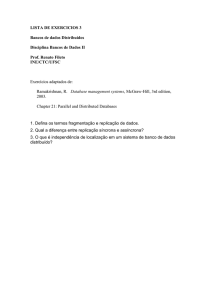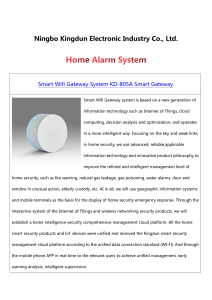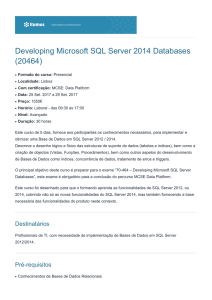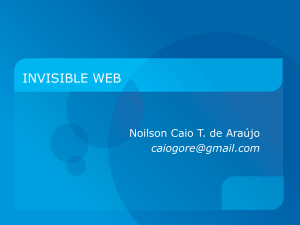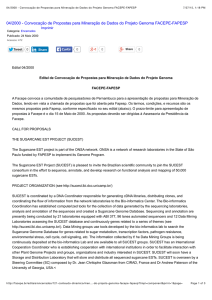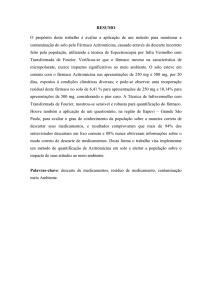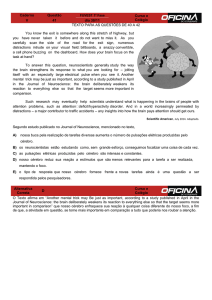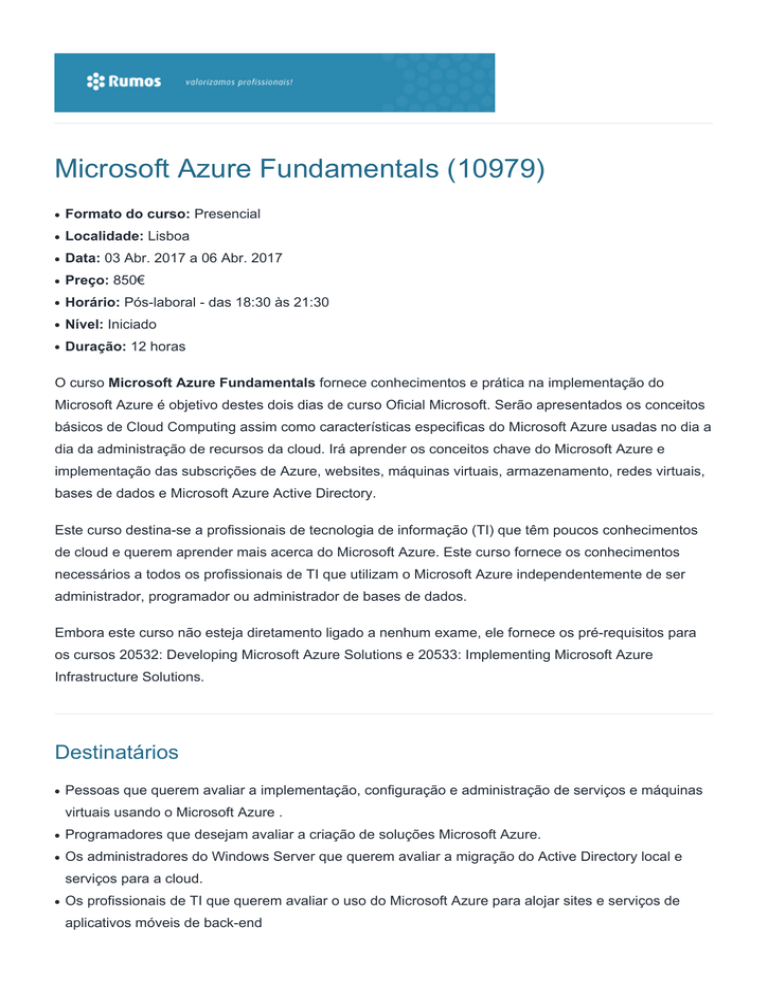
Microsoft Azure Fundamentals (10979)
●
Formato do curso: Presencial
●
Localidade: Lisboa
●
Data: 03 Abr. 2017 a 06 Abr. 2017
●
Preço: 850€
●
Horário: Pós-laboral - das 18:30 às 21:30
●
Nível: Iniciado
●
Duração: 12 horas
O curso Microsoft Azure Fundamentals fornece conhecimentos e prática na implementação do
Microsoft Azure é objetivo destes dois dias de curso Oficial Microsoft. Serão apresentados os conceitos
básicos de Cloud Computing assim como características especificas do Microsoft Azure usadas no dia a
dia da administração de recursos da cloud. Irá aprender os conceitos chave do Microsoft Azure e
implementação das subscrições de Azure, websites, máquinas virtuais, armazenamento, redes virtuais,
bases de dados e Microsoft Azure Active Directory.
Este curso destina-se a profissionais de tecnologia de informação (TI) que têm poucos conhecimentos
de cloud e querem aprender mais acerca do Microsoft Azure. Este curso fornece os conhecimentos
necessários a todos os profissionais de TI que utilizam o Microsoft Azure independentemente de ser
administrador, programador ou administrador de bases de dados.
Embora este curso não esteja diretamento ligado a nenhum exame, ele fornece os pré-requisitos para
os cursos 20532: Developing Microsoft Azure Solutions e 20533: Implementing Microsoft Azure
Infrastructure Solutions.
Destinatários
●
Pessoas que querem avaliar a implementação, configuração e administração de serviços e máquinas
virtuais usando o Microsoft Azure .
●
Programadores que desejam avaliar a criação de soluções Microsoft Azure.
●
Os administradores do Windows Server que querem avaliar a migração do Active Directory local e
serviços para a cloud.
●
Os profissionais de TI que querem avaliar o uso do Microsoft Azure para alojar sites e serviços de
aplicativos móveis de back-end
●
Os administradores de bases de dados que querem avaliar o uso do Microsoft Azure para alojar bases
de dados Microsoft SQL Server.
Pré-requisitos
●
Experiência profissional em tecnologia da informação.
●
Conhecimento e compreensão de Websites.
●
Conhecimentos básicos de conceitos do Active Directory , como domínios , utilizadores e
controladores de domínio.
●
Conhecimentos básicos de conceitos de bases de dados, incluindo tabelas e consultas simples.
Objectivos
●
Descrever os vários serviços Azure , e aceder a estes serviços a partir do portal Azure.
●
Criar e configurar máquinas virtuais em Azure.
●
Descrever o serviço Web Azure e Azure Cloud Services .
●
Criar e implementar redes Azure.
●
Criar e configurar o armazenamento cloud no Azure.
●
Usar bases de dados para armazenar dados no Azure.
●
Usar Azure Active Directory (AD Azure) , integrar aplicações com Azure AD , e gerir a autenticação .
●
Gerir uma subscrição Azure usando Azure PowerShell , Microsoft Visual Studio, e a interface de linha
de comando Azure.
Programa
Module 1: Getting Started with Microsoft Azure
This module introduces students to cloud services and the various Azure services. It describes how to
use the Azure portal to access and manage Azure services, and to manage Azure subscription and
billing.
Lessons
●
What is cloud computing?
●
What is Azure?
●
Managing Azure Subscription management, support, and billing
Lab:
●
Using the Azure portals
●
Customizing the Azure portal interface
●
Viewing billing, usage, and quotas data
After completing this module, students will be able to:
●
Describe cloud computing.
●
Describe Azure.
●
Manage Azure.
●
Describe subscription management, support, and billing.
Module 2: Microsoft Azure management tools
This module explains Azure PowerShell and its use in managing Azure subscriptions. It also describes
the Azure Software Development Kit (SDK) and the Azure cross-platform command-line interface, and
explains their benefits and uses.
Lessons
●
What is Azure PowerShell
●
The Azure SDK and the Azure CLI
Lab :
●
Using Microsoft Azure management tools
●
Using the Azure PowerShell modules
●
Use the Azure CLI
After completing this module, students will be able to:
●
Describe Azure PowerShell.
●
Describe the Azure SDK and the Azure CLI.
Module 3: Virtual machines in Microsoft Azure
This module explains how to use Azure to deploy virtual machines. It also explains the highly available
and scalable configuration of Azure virtual machines, and the management of virtual machine disks by
using Azure.
Lessons
●
Creating and configuring VMs
●
Configure disks
Lab :
●
Creating a VM in Azure
●
Create a VM from the Azure Portal by using an Azure Marketplace image
●
Verify the functionality of the VM
●
Configure storage of a VM
After completing this module, students will be able to:
●
Create and configure VMs.
●
Configure disks.
Module 4: Web Apps and cloud services
This module explains how to create, configure, and monitor Web apps by using Azure. It also describes
the creation and deployment of Cloud Services on Azure.
Lessons
●
Creating and configuring web apps
●
Deploying and monitoring web apps
●
Creating and deploying PaaS cloud services
Lab :
●
Web Apps and cloud services
●
Creating and configuring a WordPress web app
●
Create a cloud service
After completing this module, students will be able to:
●
Create and configure web apps.
●
Deploy and monitor web apps.
●
Create and deploy PaaS cloud services.
Module 5: Creating and configuring virtual networks
This module explains Azure virtual networks and how to create them.
It also covers variety of virtual network components, focusing in particular on Azure load balancers.
Lessons
●
Getting started with virtual networks
●
Creating a virtual network
●
Getting started with Azure Load Balancers
Lab :
●
Create a virtual network
●
Creating a virtual network
●
Verifying virtual network functionality
●
After completing this module, students will be able to:
●
Explain virtual networks.
●
Create a virtual network.
●
Describe Azure Load Balancers.
Module 6: Cloud storage
This module explains the use of cloud storage and its benefits. It also explains how to create, manage,
and configure cloud storage in Azure.
Lessons
●
Understanding cloud storage
●
Create and manage storage
Lab :
●
Configure Azure Storage
●
Create an Azure Storage account
●
Create and manage blobs
After completing this module, students will be able to:
●
Understand cloud storage.
●
Create and manage storage.
Module 7: Microsoft Azure databases
This module explains the options available for storing relational data in Azure. It also explains how to use
Microsoft Azure SQL Database to create, configure, and manage SQL databases in Azure.
Lessons
●
Understanding options for relational database deployment
●
Creating and connecting to Azure SQL databases
Lab :
●
Creating a SQL Database in Azure
●
Create a new Azure SQL database in Azure and configure SQL Server firewall rules
●
Manage content of an Azure SQL database by using SQL Server Management Studio
After completing this module, students will be able to:
●
Understand relational database deployment options.
●
Create and connect to Azure SQL Databases.
Module 8: Creating and managing Azure AD
This module explains how to use Azure AD and Azure Multi-Factor Authentication to enhance security. It
explains how to create users, domains, and tenants in Azure AD, and how to use Multi-Factor
Authentication and single sign-on (SSO).
Lessons
●
Overview of Azure AD
●
Manage Azure AD authentication
Lab :
●
Create users in Azure Active Directory tenants
●
Create users in Azure AD
●
Create a new Azure AD Tenant and a custom DNS domain
After completing this module, students will be able to:
●
Describe Azure AD.
●
Manage Azure AD authentication.



